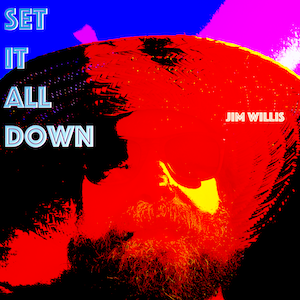Interesting approach from Spotify here on explaining their position w/r/t Apple. I see one long thread from the 19th century Railroads to the 20th century’s Internet Explorer/Microsoft anti-trust case to the issue of app-store revenue in the 21st century. Interesting times.
-
2019-03-14 15.46.29
-
2019-03-13 14.41.47

Picked up some new #StealYourNavesink stickers. Will bring some out to upcoming gigs so hit me up! #redbanknj #deadbank
-
2019-03-13 12.08.24

#navesink #march
-
2019-03-13 11.25.50
Some really good deals on Philips Hue bulbs on Amazon right now. According to camelcamelcamel.com at $10, this is the cheapest they’ve ever been. @tweethue #homeautomation
-
2019-03-11 21.49.20

Got outside for lunch today. Stoked.
-
2019-03-10 12.02.38
Good reporting from the New Yorker on Fox/White House. Back in middle school I remember learning about Vremya, the Soviet-era state-run news channel and thinking to myself If the citizens know the channel is just propaganda, why do they still watch it?
-
2019-03-09 19.45.04
As a result of the Tax Cuts and Jobs Act (TCJA), for the tax years 2018 through 2025, you cannot deduct home office expenses if you are an employee. THANKS TRUMP!!!!
-
2019-03-08 21.50.22
-
1994 Fender Blues Deluxe (reissue) Amp For Sale
I’ve lost count of how long I’ve been gigging with this amplifier. At least 10 years. Maybe closer to 15. It’s played hundreds of shows, that’s for sure. And it has never let me down.
I’m thinking about selling it because I am too old to carry it around any more. It’s not that it’s *that* heavy. It’s just not light and I need something light.
It is cosmetically beat up, for sure. But is sounds amazing and is so much more reliable than any of the crazy expensive amps (Victoria, etc.) that other guitarists I’ve played with use.
According to the fender website this amp was manufactured around September 1994. It’s got a 12” speaker and 40watts of tube power. Read more specs here.
Here are some pictures. If you are interested, drop me an email or DM me @sjwillis on twitter.



-
2019-03-06 17.55.43
Cool to hear @manoushz covering the decentralized web. Or what I like to call “2006.” Also didn’t realize that Mozilla was in the podcast biz. Anyway, here’s Manoush give her a listen on IRL.
Current Spins


Check out my album Set It All Down on your favorite streaming service.
Posts Worth Reading:
Letterboxd
- Total surprise. Amazing.
- Couldn’t finish this one. Not bad, just not what we needed at the moment.
- Looking for a comedy, this wasn’t but it did treat a tough topic in an accessible way. Still, not funny especially in light of our current political climate.
- Great spy movie, loved the style and story.
- (date approximate)
- (date approx)
- I love a frame tale and this one is spectacular
- Amazzzzzzing. Nothing like it.
- On location India footage was transportive.
- so much unexpected happening here. Perfect New Year’s Eve movie.
Reading Notes
- Who profits from our constant state of dissatisfaction? The answer, of course, is painfully obvious. Every industry that sells a solution to a problem you […]
- the shifts have been in place for awhile. A certain kind of book—say those reviewed in the NYRB—will become like opera, or theater, or ballet, […]
- • No more struggle: “Whatever arises, train again and again in seeing it for what it is. The innermost essence of mind is without bias. […]
- The real problem, in my mind, isn’t in the nature of this particular Venture-Capital operation. Because the whole raison-d’etre of Venture Capital is to make […]
- . The EU invokes a mechanism called the precautionary principle in cases where an innovation, such as GMOs, has not yet been sufficiently researched for […]
Saved Links
- December 2025
- March 2025
- February 2025
- January 2025
- December 2024
- November 2024
- October 2024
- September 2024
- August 2024
- July 2024
- June 2024
- May 2024
- April 2024
- March 2024
- February 2024
- January 2024
- December 2023
- November 2023
- October 2023
- September 2023
- August 2023
- May 2022
- April 2022
- March 2022
- February 2022
- January 2022
- December 2021
- October 2021
- July 2021
- June 2021
- January 2021
- December 2020
- November 2020
- October 2020
- September 2020
- August 2020
- July 2020
- April 2020
- March 2020
- February 2020
- January 2020
- December 2019
- November 2019
- October 2019
- September 2019
- August 2019
- June 2019
- May 2019
- April 2019
- March 2019
- January 2019
- June 2018
- March 2018
- February 2018
- November 2017
- October 2017
- August 2017
- February 2017
- August 2016
- December 2015
- July 2015
- March 2015
- February 2015
- January 2015
- December 2014
- November 2014
- March 2014
- February 2014
- September 2013
- August 2013
- July 2013
- June 2013
- May 2013
- April 2013
- March 2013
- February 2013
- December 2012
- June 2012
- January 2012
- February 2010
- January 2010
- December 2009
- September 2009
- August 2009
- July 2009
- June 2009
- May 2009
- April 2009
- March 2009
- February 2009
- January 2009
- December 2008
- November 2008
- October 2008
- September 2008
- August 2008
- July 2008
- June 2008
- May 2008
- April 2008
- March 2008
- February 2008
- January 2008
- December 2007
- September 2001
- May 2001
- February 2001
- January 2001
- September 2000
- June 2000
- May 2000
- November 1999
- September 1998
- June 1998
- May 1998
- September 1997
- February 1997
